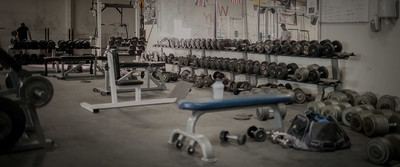Over the last few years, a debate has been raging in the fitness community about shoes—or the lack thereof. A number of studies tout the injury-prevention benefits of running barefoot or in so-called "minimalist" shoes, while others says it puts athletes at risk for a whole new slew of maladies. This uncertainty hasn't stopped shoe producers from offering up a host of new models—minimalist in size, if not always price—that claim to encourage moving "naturally" or "the way you were designed."
Minimalist Shoe Terms
Heel drop:
The difference in height between the forefoot of a shoe and the heel. Shoemakers only recently started including such info on product pages. We only tested shoes with a drop of 4 mm or less.
Stack height:
The total height of a shoe's sole. The smaller this number is, the more pronounced the feeling of the ground will be.
Toe box:
The part of a shoe that covers and protects your toes. Minimalist shoes generally have wider than normal toe boxes.
Zero-dropped:
A fancy way of saying that a shoe is totally flat underfoot, or that the heel drop is 0. Dollar-store thongs meet this standard; so do some $200 running shoes.
Given the overwhelming injury rates among runners indicate—around 80 percent suffer an injury or some sort each year, at last count—it's reasonable that athletes and manufacturers would consider some fundamental changes to the status quo. On the other hand, weight training doesn't have the same negative connotations, and its athletes suffer a fraction of the injuries of runners. Nevertheless, I spoke with a number of experts who said that training in barely-there footwear offers real benefits for strength athletes, as long as you approach the switch with the right mindset and expectations.
However, the choices available for weight training shoes have historically been quite limited: Converse All-Stars, shoes designed for other sports such as soccer, or high-heeled weightlifting shoes ... but no longer! Partially in response to the popularity of flat, wide shoes in the CrossFit community, manufacturers are now offering a range of training-specific minimalist models.
A group of Bodybuilding.com editors recently put the latest generation of training-focused models to the test in the gym. Use these reviews as a first step, and follow up by trying on multiple models before you buy. Even more so than with running shoes, proper fit is crucial with this type of footwear, so don't be afraid to make use of that generous return policy.
Old-School Minimalism
Who they're for: People who've had success with what they know and don't get what all the fuss is about. Seriously: $100 or more for shoes?
Converse All-Star Weight: 15 oz. or more apiece (depending on age and long-accumulated foot-sweat) Feel: Firm
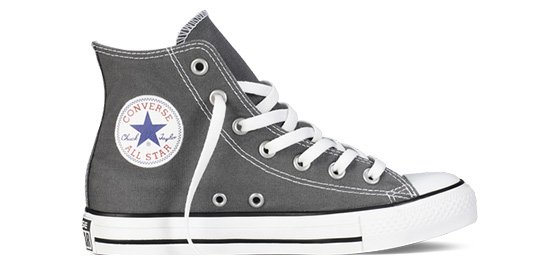
Coaches have been using, and advocating, the All-Star for all types of training since World War II and before. The reasons are simple: They last forever, hold the foot in place, have flat and stable soles, and are generally firm and non-compressing underfoot (although some people complain that they've become more high-heeled, compressible, and running-shoe-like since Nike bought Converse in 2003).
The downside: They're also rather heavy and can feel a bit clunky in any athletic setting involving jumping, sprinting, cutting, or sustained running. They're still a solid option, but if you like them, you'd probably like some of the others included here as well. A tip: Look for the elusive "slim sole" model to cut down on unnecessary cushioning and get closer to the ground.
Soccer Shoes / Retro Sneakers Weight: Varies Feel: Varies, but gets closer to "barely there" over time
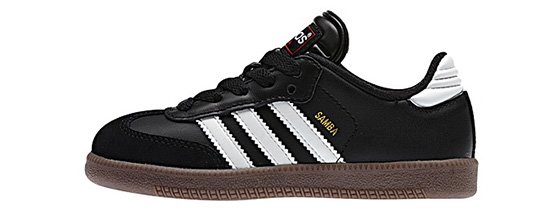
Toss your Adidas Sambas, Nike Cortez's, wrestling shoes, Vans, Puma H-Streets, and Asics Onitsuka Tigers in this bin. Each has its precise fit and diehard following. Are they better for weight training than marshmallow-heeled running shoes that dominate the gym? Probably. But as with Converse All-Stars, you may find that modern offerings from the companies below offer the same lightweight build and agile feeling, but with a difference: toe box width. Once you feel what it's like to be able to spread your toes out and grab the ground whenever you want, it may be hard to go back. Stick with your classics if you must, but do yourself a favor and at least try on one of the other shoes here next time you've got a wandering eye.
"What about my Toms?" you asked? Slip-ons meet most minimalist standards and bear more than a passing resemblance to deadlift slippers. Just stay smart about how and when you use them. Slipping laterally with any kind of load on your back, shoulders, or overhead is bad news.
Luna Sandals and Xero Shoes Huaraches Weight: Not very much Feel: Barely there
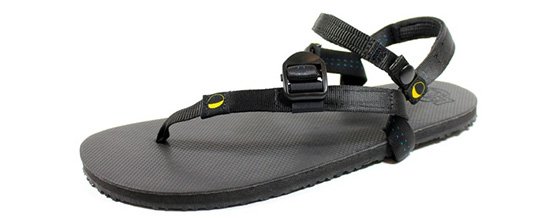
Arnold and other classic bodybuilders were often seen lifting either barefoot or in thongs, but the sandal-prone among us have more choices today. In the wake of "Born To Run," a handful of companies began manufacturing simple huarache-style sandals with anti-shoe names like Invisible Shoes, Xero Shoes, and Unshoes. Bodybuilding.com contributor Al Kavadlo, who wears Xero Shoes, is one fan of sandals. "Training in huaraches has strengthened my connection to my feet as well as strengthening the feet themselves," he says.
Luna Sandals, created by "Barefoot Ted" McDonald, were one of the first new huaraches on the scene after "Born to Run," and their Venado model is a surprisingly solid option if your gym allows exposed toes. The "Monkey-Grip" surface of the sandal keeps the foot in place solidly under the force of heavy lifts, even after the feet begin to sweat. Athletic conditioning work (especially with a jump rope) might be painful in these, but at just 3.9 oz and 6 mm of stack height, there's almost nothing that'll put you closer to the ground. Being able to stretch out the toes at will is an unexpected and addictive pleasure, too.
The Reviewers
| 
Nick Collias
Modalities Tested: Kettlebell swings 'n things, deadlifts, trail running, playing with a toddler Minimal History: Raised in Chucks, lives in sandals, used to run and lift in dress shoes. The original Vivobarefoot Evo changed everything.
| 
Chris Ullery
Modalities Tested: Squats, deadlifts, trail runs, treadmill slogs, myriad metabolic and resistance activities Minimal History: Dress shoe by day, barefoot by choice. Minimalist adventurer and trail hunter. Sporting FiveFingers since 2007.
| 
Cassie Smith
Modalities Tested: CrossFit, Olympic-style weightlifting, ass-to-grass squats Minimal History: Played college soccer and now hates cleats. Switched from bodybuilding in traditional sneaks to CrossFitting in Nanos. Hasn't looked back.
Not-Quite-Flat Training Shoes
Who they're for: People who see the logic of getting rid of padding and heels for the most part, but who still want to, you know ... wear shoes. Also great for brand-loyal athletes who trust their favorites but are ready to try the next big thing.
Nike Free Trainer 3.0
Weight: 18 oz. (men's size 9 pair)
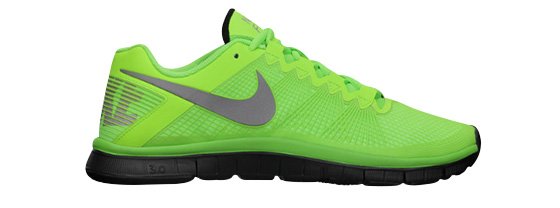
Nike launched its popular Free shoe series in 2005 with the Free 5.0. Since then, the line has exploded with multiple new models and styles, including the Free Run, weatherproof Free Shield, Free Forward, Free Hyperfeel, and Free Trainer. Nike also offers an online styling suite that allows users to customize a unique pair of Frees, dubbed the Free iD, with select colors, graphics, and flexibility options.
The Free Trainer line, which includes the Free Trainer 3.0, 5.0, and 7.0, has been designed with cross-training gym-goers in mind. The Free Trainer 3.0 features a 4 mm heel drop that, despite its low-to-ground ride, offers substantial cushioning. This ample underfoot cushion makes the Free Trainer 3.0 a great introductory minimalist shoe, but it might turn off serious barefoot lifters who want maximum ground-feel.
The shoe sports a comfortable, flexible upper cut from a durable material called Kirum. This glove-like upper provides good overall foot support with just enough flex. The Free Trainer 3.0 is a stable shoe with a good heel pocket, making it versatile enough for myriad gym activities like cardio, conditioning, lifting, and plyometrics.
New Balance MX20V3
Weight: 11 oz. (men's size 10 pair) Feel: Firm
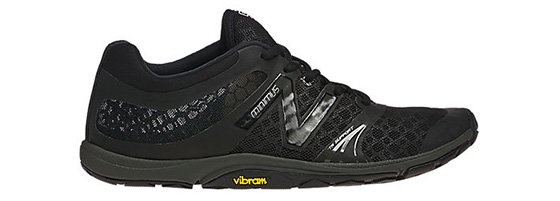
New Balance's 4 mm heel drop Minimus line has rapidly earned a devoted following for its versatility and glove-like fit since its launch in 2010. The MT10 is perhaps the most commonly seen version in the gym, although it is technically a trail running shoe. In the last couple of years, though, the Minumus line has taken aim at gyms and boxes more directly with its MX models.
The MX20V3 is the new flagship training model, with a tougher and less flexible rubber sole than any other Minimus shoe, while still staying remarkably lightweight. Unlike the cushioned Nike Free, though, this is a seriously firm ride underfoot. For that reason it might be the better "transition shoe" to minimalism if you're not looking to leap right in to something zero-dropped. And even if you're a devoted minimalist, the traction of sole of this shoe makes it worth considering if your athletic pursuits include sports like tennis, racquetball, or basketball.
Inov8 F-Lite 195
Weight: 13.8 oz. (men's size 9 pair) Feel: Barely there

A popular kick among CrossFitters, the F-Lite 195 features a 3-mm heel drop and extremely flexible upper. The shoe's mesh lining is incredibly breathable, which helps otherwise stinky feet vent during long bouts of intense activity. The shoe's rubber sole is thick and sticky, making it a great indoor-outdoor hybrid.
The F-Lite 195 offers a low and stable platform for compound lifts, but it doesn't provide much in the way of ground feedback. As a result, it's a killer all-purpose athletic shoe, but perhaps not the best lifting-only shoe. Thin-soled shoe devotees may want to look elsewhere, but the 195 is a great choice for athletes who want to lift, run, climb, and sprint in the same pair of durable kicks.
Reebok Nano 2.0
Weight: 14.4 oz. (women's size 8 pair) Feel: Between cushioned and firm
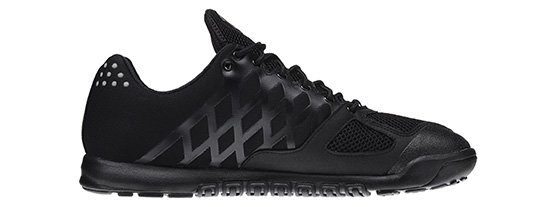
Reebok created and has marketed the Nano specifically as a CrossFit shoe, not as a minimalist or training shoe. So bear that in mind, and expect to see these shoes far more in boxes than in gyms. But no matter who it was "made for," the Nano is a super-versatile shoe that can serve just about any athlete. Wear it to work if you're on your feet all day, or lace it up for a long run. It's a great shoe for box jumps, Oly lifts, or even your normal 21-gun routine. The 4 mm drop provides a stable, flat surface, but it's not so firm that you feel like you're landing on cement. The sole isn't as flexible as some of the crazy-minimal shoes described elsewhere here, but it's still flexible, and the "DuraGrip" toe cap helps keep the toe from wearing out.
Need one more reason to consider the Nano? It came in at least 15 different color choices for women and 17 for men, last time I checked. Never thought you'd need a lime-green pair of sneaks? You do now.
That said, if you're considering buying the Nano, I suggest you check out the 3.0 in addition to the 2.0. It's not as cute—crossfitfashion!—but by all reports it's a more durable choice. I had been wearing my 2.0s for about 3 months before I noticed the rubber sole peeling off the bottom. Athletes who perform a lot of rope accents have also complained that the medial side wore down quickly. Reebok aimed to eliminate those issues with the 3.0. Unfortunately, they also eliminated at least a dozen of the colors.
"Zero-Dropped" Training Shoes
Who they're for: Devoted free-weight lifters or powerlifters looking to get as close to the ground as possible, while still wearing something that functions like a normal shoe for conditioning work or general wear.
Merrell Flux Glove
Weight: 13.4 oz. (men's size 10 pair) Feel: Firm
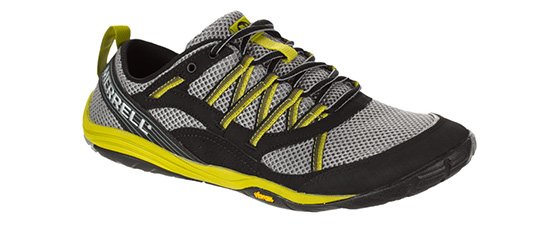
Merrell knows minimalist shoes. Their Trail Glove caters to off-road adventurers, the Road Glove is great for pounding asphalt, and the Vapor Glove appeals to super-minimalist runners. The Flux Glove is one of Merrell's lesser-known, multisport offerings. It's an all-purpose, all-terrain, trail-eating minimalist shoe that also happens to thrive in the gym.
This light-but-rugged kick features an extremely roomy toe box, protective rubber toe bumper, glove-like mesh upper, zero heel drop, minimal cushioning, and a sticky Vibram rubber sole. The lean cushion and flat sole offer good ground feedback and make for an extremely stable lifting platform. As a result, the Flux is a great outdoor shoe that works well for squats and deadlifts.
The Vibram sole provides great traction, which helps the wearer maintain ground control during explosive or tight movements like lateral bounds and quick-stop sprints. The Vibram rubber also protects more adventurous wearers from underfoot bruising, without adding any heel rise. In addition to its solid base, flexibility, and good lateral stability, the Flux features an antimicrobial footbed to control odor and keep your sweaty feet free from stink.
Topo Athletic RX
Weight: 15.6 oz. (men's size 9 pair) Feel: Firm
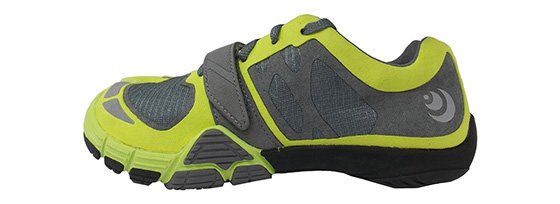
This unique design, dubbed "The Ninja Turtle Foot" around the Bodybuilding.com office, is the workout-focused shoe from a new company started by Tony Post, the former CEO of Vibram during the launch of the FiveFingers. There's more shoe underfoot in the Topo RX than in pretty much any Vibram model, but it's still zero-dropped and has a very flat sole—indeed, more so than many FiveFingers. The split-toe design may seem to come out of left field, but it's actually inspired by the traditional Tabi boots worn in Japan (and, yeah, by ninjas).
There are advantages to this design. One, according to Topo's creators, is that it frees up the most important toe for power and balance, while keeping the rest of the foot secure in a separate box. Another is that the pinky toe isn't so prone to getting bonked or smashed during running or some lifts. (Trainer Eric Cressey points to rear-foot elevated split squats as one problematic movement for Vibrams). Like the Converse All-Star, the RX also has a firm rubber sidewall around the entirety of the foot that helps hold the foot securely in place, but adds a Velcro strap along the forefoot. Effective for running, lifting, or general athletic training, this shoe is a solid pick as long as you don't mind buying new socks.
Vivobarefoot The One
Weight: 14 oz. (men's size 10 pair) Feel: Barely there
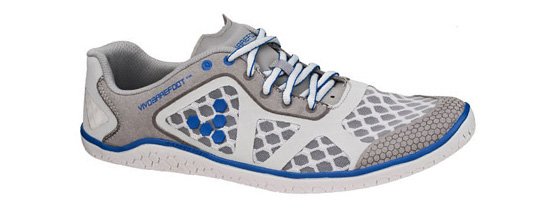
Now we're getting minimal. This 7-ounce featherweight features one of the widest toe boxes we tested and has an incredibly soft mesh upper. The sole is flat and stable enough for heavy lifting, thanks to the grippy wet-dry slip-resistant tread. Unlike the offerings from Merrel and Nike, this shoe is truly minimal underfoot as well as over, meaning you might feel like your heel is cracking against the ground while walking at first. This should pass as you get accustomed to it, but running in it might be out of the question until you're ready to abandon your heel-striking ways. The One's simple design also earns it style points, as it is unassuming enough to avoid getting weird looks. A strong contender.
Super-minimalist shoes
Who they're for: Barefoot diehards who love the feel of the ground underneath and have no interest in stepping back into "foot coffins."
New Balance Hi-Rez
Weight: 7.4 oz. (men's size 10 pair) Feel: Barely there

The first time you wear the Hi-Rez, you will feel strange. You'll feel, quite frankly, like you're riding on individual pockets of cloud. As you wear the shoe more often and put it through various paces, that feeling will dissipate. You'll forget the individual rubber hexagons underfoot and feel like your feet ride on uniform soles. You'll develop a great appreciation and respect for the ground beneath you. Somewhere along the way, as your ankles stabilize and your feet get stronger, you'll fall in love with the Hi-Rez.
The Hi-Rez is New Balance's most minimal minimalist shoe. It has an incredibly flexible sole—you can easily fold the entire shoe into a taco—superb ground feel, and breathable second-skin fit. The shoe is ridiculously lightweight, but it's surprisingly resilient and durable. It stands up well to asphalt and treadmill rubber, but it's not great on trails. The independent underfoot pods offer a decent amount of cushion but don't compromise ground feedback. As a result, this shoe is suitable for compound lifts and long runs—unless you lift in a puddle or encounter any heel-bruising pebbles.
Even with its relatively narrow toe box—especially compared to Altras—the Hi-Rez is incredibly comfortable for your wigglers thanks to its extremely soft and flexible upper fabric. It's easy to screw your feet into the ground when wearing the Hi-Rez, but the sole doesn't necessarily offer a flat, stable lifting platform. The Hi-Rez is more versatile than some of the shoes featured above, but it's not great in rough weather or on tough terrain. If you're new to minimalist training, you'll also need some time to build up the ankle strength and stability to wear these beauties.
Ultimately, if you love minimalist shoes but aren't interested in the individual toe-pockets of Vibram FiveFingers, the Hi-Rez could be your gym-shoe dream. It's ultra-flexible, barely there, and as minimalist as shoes get. It has decent traction, and it really lets you root yourself to the deck. Of course, adventurous wearers who want a burlier, multisport, all-purpose shoe should probably look elsewhere.
Vivobarefoot Evo
Weight: 14 oz. (men's size 10 pair) Feel: Barely there
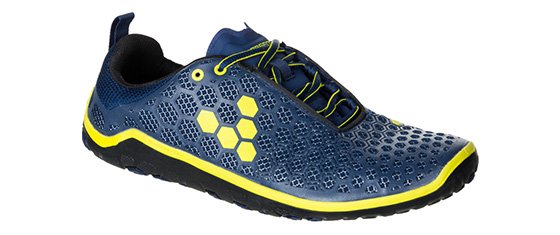
The Evo, an early zero-drop shoe by the British company Vivobarefoot, is incredibly wide and flexible, with unique textured sole that is surprisingly tough and long-lasting for a minimalist shoe. While not as light as The One or other models here, the Evo gets high points for simple comfort and versatility. It's a shoe you can lift, run, play, walk, and live in. Vivobarefoot has also released several spinoff models over the years, including an Evo with a hydrophobic upper, an extra lightweight model, and the Neo, which has the same great sole but with a fabric surface instead of the Evo's mesh.
The price of Vivobarefoot sneakers is a common complaint, but look around online, and you'll find deals galore. That said, find a way to try a pair on before you buy to make sure it fits the shape of your foot.
Skora Phase and Form
Weight: 7.2 oz. (Phase men's individual, size 10) Feel: Phase: barely there; Form: firm

Portland-based Skora has a small lineup of zero-dropped shoes mostly built to cater to runners. However, Skora athlete Kyle Kranz told us that when designing the outsole for the new Core and Phase models, they also factored in lifting, and in particular squats and deadlifts. Unlike Skora's original flagship model, the Form, which has a goat leather upper and a firm, tough outsole (and which our reviewer loved for trail running and general wear) the new offerings are designed to flatten out underfoot, providing more stability under a load.
Our two Skora reviewers both liked the Phase's silky upper, which is as soft and breathable as any shoe reviewed here. The shoe's asymmetrical lacing pattern was also a pleasant surprise, as it encouraged a unique fit that was snug and glove-like in the mid-foot but loose and yielding in the forefoot. The outsole also feels quite minimal underfoot during running and jumping, flexing with the foot and giving plenty of sensory feedback.
The only downside was that in comparison with the very flat soles of minimalist shoes by Merrell, New Balance, and Altra, the roundness of the Skora's heel was still noticeable during lifting. If hoisting heavy weights with precise technique is the focus of your training, one of these others may be more up your alley. If weights are just a performance-enhancer for your road running, though, the Phase may fit you like a glove.
Vibram El-X
Weight: 8.4 oz. (men's pair) Feel: Barely there
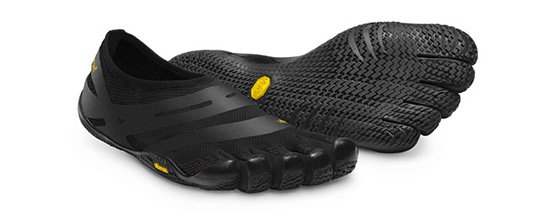
Vibram FiveFingers split shoe-lovers like Moses split the Red Sea. Minimalist adventurers and athletes seem to love or hate the FiveFinger, often based on looks alone. If you can see past the FiveFingers' unique design, or happen to enjoy it, the El-X has a lot to offer.
The El-X is an extremely minimal shoe, even for the ultra-minimalist FiveFinger line. It's incredibly lean all-around, featuring a breathable mesh upper, thin antimicrobial footbed, and maximum sole thickness of 2.7 mm. It's foldable, bendable, packable, flexible, and might even be called downright floppy. You can easily fold the El-X into a shoe taco, roll it into a burrito, or bend it into other footwear-foods of your choice.
The flexibility, lean build, and thin construction make the El-X less of a shoe and more like second skin. If you're a seasoned FiveFingers wearer, you'll note that the El-X fits better and more comfortable than the Classic. If you're new to FiveFingers, the El-X is surprisingly easy to put on, but you'll need time to build ankle and foot strength before you wear these for prolonged high-intensity activity.
Despite being thin, the sole on the El-X is strong, tacky, and delivers awesome traction. It's a delight to lift in these shoes. They're the closest I've come to lifting barefoot, and they're much better for squats and deadlifts than lifting in socks alone. In regard to the legendary FiveFingers stink, I found that the El-X is actually quite smell-resistant compared to other FiveFingers models. This is likely due to the mesh upper, which offers plenty of ventilation.
While the El-X isn't great for running trails or ultras on hot asphalt, it's perfect for the gym-goer who wants the most authentic barefoot-shoe experience possible. In fact, it may be one of the best gym shoes in the FiveFingers lineup.
Altra Samson (for men), Delilah (for women) Weight: 11 oz. (men's size 10 pair) Feel: Barely there

Colorado-based Altra has carved out a niche by focusing entirely on shoes that are zero-dropped, or where the heel is no higher than the forefoot. They offer some highly padded and supportive models that are anything but "minimalist," but the Samson puts you right on the ground—or at least one centimeter from it.
The flat, wide sole has little texture and no arch support, making it easy to "grip the deck" during either heavy free weights or balance-intensive work like pistol squats or lunges. The Samson's razor-siped rubber offers great traction, and the laces and heel collar offer just enough of a customized fit to hold the foot in place during lateral cuts, sled pushes, or jumps. The Samsons are not the most glamorous shoes in terms of design, and if you take them out on a rocky trail you'll feel every pebble along the way. But in the friendly confines of a gym, they're a well-made and comfortable option if you're looking to get as close as possible to barefoot.

